Snapping Hip Syndrome “Dancers Hip”
- Best Asics Shoes for Flat Feet - October 25, 2024
- Best Running Shoes for Flat Feet - October 22, 2024
- Posterior Tibial Tendonitis - October 21, 2024
What is Snapping Hip Syndrome?
Snapping hip syndrome, also known as “Dancer’s Hip”, is when the hip joint makes a snapping noise. It is usually repeatable and can be reproduced with specific movements such as flexing the hip, walking, running, lifting the knee, and getting up from a chair, to name a few.
The snapping noise and sensation are caused by a muscle or tendon moving over a bony prominence around the hip. For most people, snapping hip is pain-free and more annoying than problematic. Unfortunately, for some athletes and dancers, this can develop into a painful condition; it can also cause weakness and affect performance.
Symptoms can occur at different locations around the hip, relating to different structures such as tendons, muscles or articular cartilage.
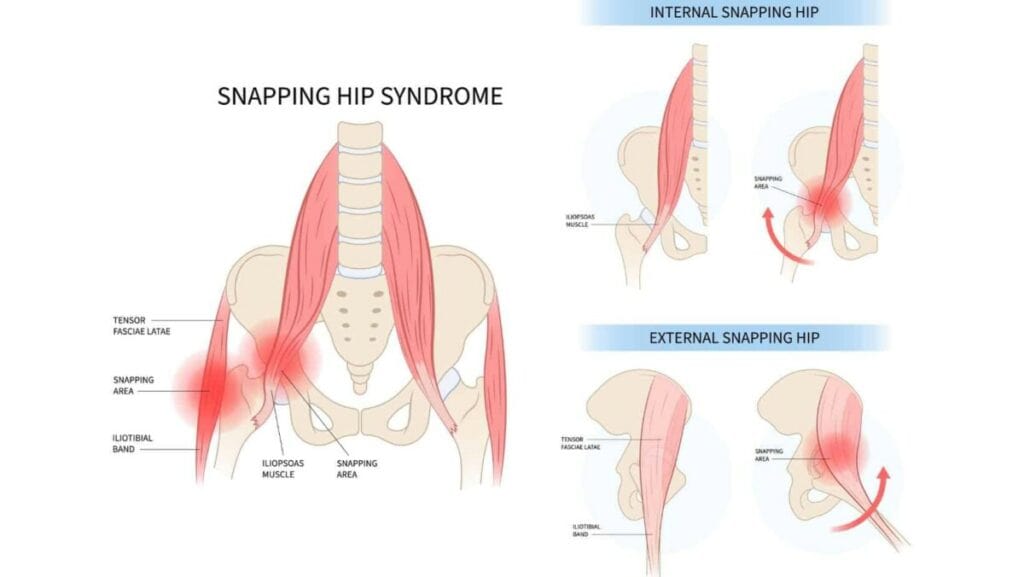
External Snapping Hip
A snapping sensation at the outside of the hip is caused by the Iliotibial band (ITB) moving over the greater trochanter. The greater trochanter is a protruding part of the femur bone. This type is often related to glute weakness and/or ITB tightness.
Internal Snapping Hip
A snapping sensation at the front of the hip is caused by one or more of the hip flexor muscles. It can also be caused by the hip flexor muscle tendons moving over the hip bone, which can cause irritation and bursitis at the front of the hip.
Internal Articular
A snapping sensation felt deeper in the hip joint caused by a tear in the cartilage. It can be either the cartilage of the torn joint socket, called the acetabulum, or the cartilage on the femoral head.
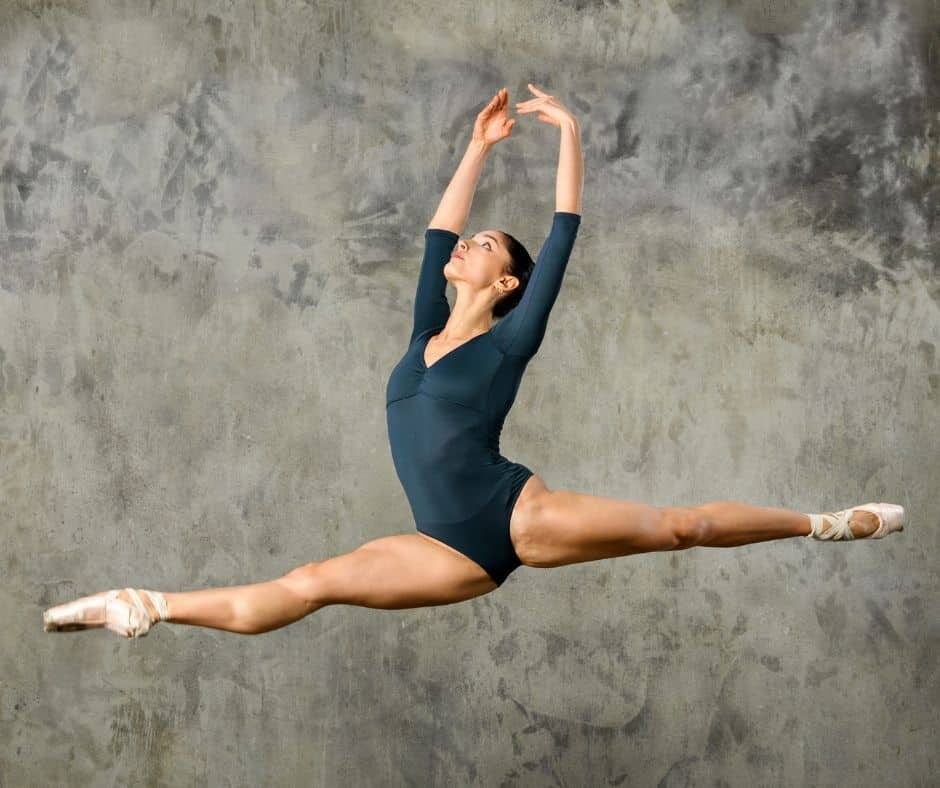
Causes?
Snapping hip is typically seen as a result of overuse in sports, especially those with repeated hip flexion, such as soccer, dance, and gymnastics. Hence, it is also called “Dancer’s Hip. The repeated flexion of the hip, particularly when it is done quickly, or the repeated stretch and engagement of the muscle from extension can strain the muscle and cause this condition.
It is more common to see with adolescents, particularly following a growth spurt due to increased muscle tension as the muscles catch up with bone growth. More females develop snapping hips than males. This may be attributed to greater flexibility in females.
Clinical Tests
Assessment for snapping hip syndrome should include a thorough discussion about the symptoms experienced, the location of symptoms, and the actions and activities that can cause the symptoms.
In many cases, the individual can recreate the snapping, which can be helpful for the assessor to see the position and movement that causes it. This can often be enough to show which structures are causing the snapping.
Feeling over the snapping area or where there is pain as the joint is moved may be useful for the examiner to feel what structures are moving.
It is essential to have a thorough assessment with an experienced healthcare professional, who will be able to rule out other possible issues with the joint. In some cases, diagnostic imaging may be requested to confirm the diagnosis.
How to Treat Snapping Hip Syndrome
Snapping hip syndrome treatments can vary depending on several factors:
– structures involved: hip flexors, ITB, cartilage
– severity of symptoms
– duration of symptoms
– activity and sports of the individual
– health of the individual
– the individual’s response to treatment
Reducing activity is not always necessary; snapping hip often presents as an annoying noise and sensation rather than a painful and irritated condition. In these cases, the individual may well be able to continue their activities and sports as normal. If pain is present, then the severity and irritability should be established, and this needs to be weighed up with the benefit of continuing sport. When a physiotherapist or sports doctor sees a case, it is because it has become a problem that might cause pain or negatively affect performance.
Modifying activity and sports is necessary for painful snapping hip cases. Rest may need a complete break from a particular activity or an alteration. However, the extent of the modification will depend on the individual. During this period, ice can be helpful for symptom relief, and if pain and inflammation are significant, non-steroidal antiinflammatories may be recommended.
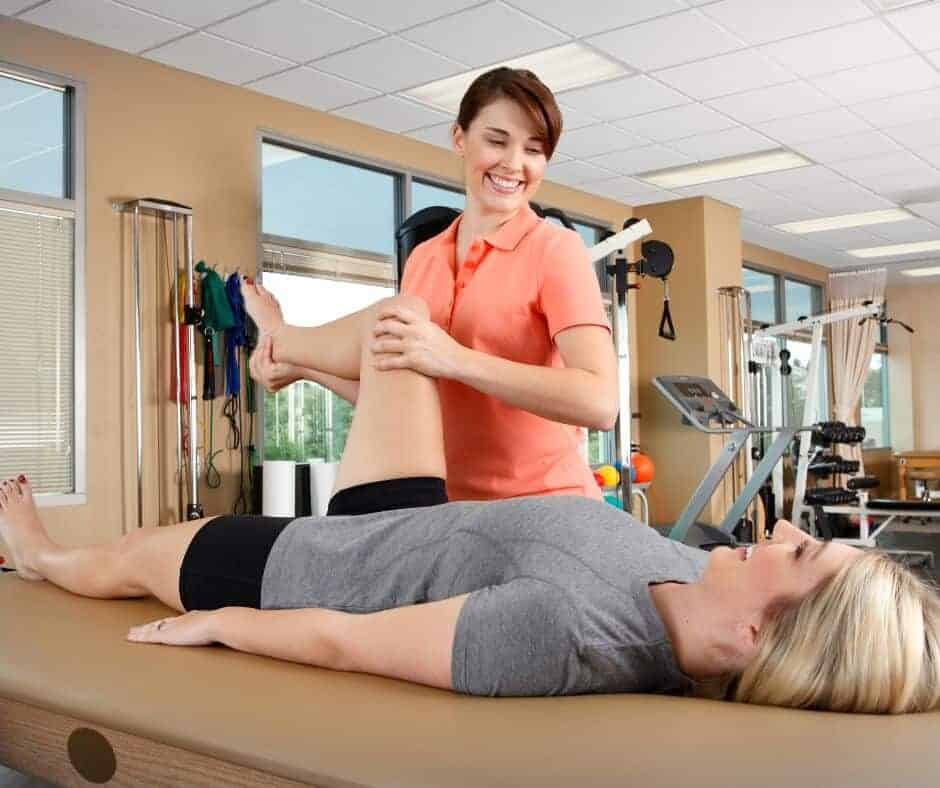
Physical Therapy
The most valuable part of physical therapy for snapping hip syndrome is exercise prescription. This should follow a detailed assessment and be specific to your symptoms and body. Physical therapy in the form of hands-on treatment can include deep tissue massage, trigger point release of muscles and connective tissue, and joint mobilisations, and is used for short-term pain relief.
Exercises and Stretches
Exercises for snapping hip syndrome should combine stretching, mobility, and strengthening exercises. Some commonly prescribed stretches include those for the iliotibial band, hip flexor, gluteal and piriformis muscles. Strengthening should be focused on the individuals’ points of weakness, and the aim is to improve the condition of tissues and quality of movement.
Below are 3 valuable exercises, a glue bridge to strengthen the gluteus maximus, medius and minimus, a hip flexor strengthening exercise, and a core exercise working on abdominal strength with hip flexion.
Glute Bridge
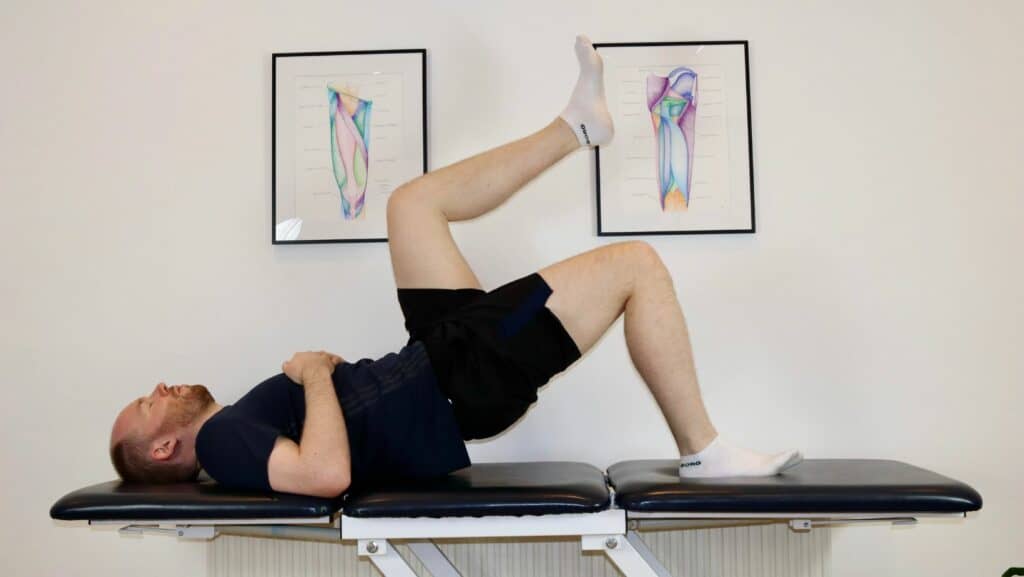
Hip Flexor Strengthening

Core Strengthening
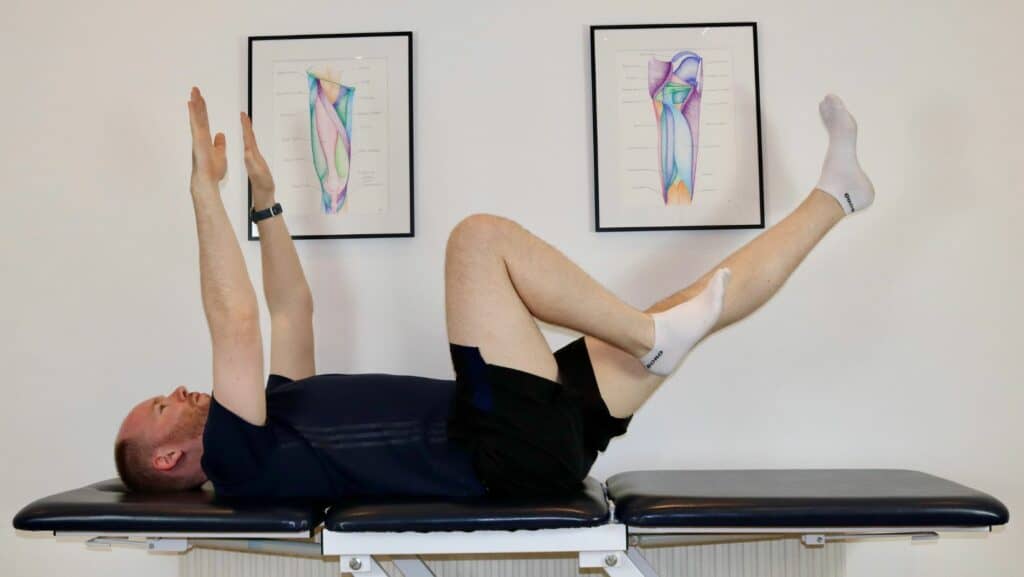
Recovery Time
Snapping hip syndrome recovery time is typically 2-6 weeks but varies. Duration of symptoms before seeking treatment, as well as the severity of pain and adherence to advice and rehabilitation, are all key factors in determining the recovery rate.
Injection and Surgery
If recovery is slow, symptoms severe, or symptoms develop close to competition events, additional treatment may be necessary or desirable. Corticosteroid injections can be helpful to reduce swelling and inflammation and can effectively reduce symptoms. It is also a useful treatment if bursitis has developed. Physical therapy and activity modification are still recommended with this option.
Surgery is rarely necessary. Still, if recommended, it is typically performed arthroscopically either as investigative surgery or if a cartilage tear is present that needs removal or repair. In many cases, physical therapy will always be advised after surgery and pre-surgery.
_______________________________________
We are specialists in Physiotherapy, with our clinic in Fulham, South West London.
We offer Online Appointments for £60 and Face-to-Face appointments for £85 in our clinics.
Related Articles:
3 Exercises for Dancers – Hip Flexor Pain – Hip Labral Tear
